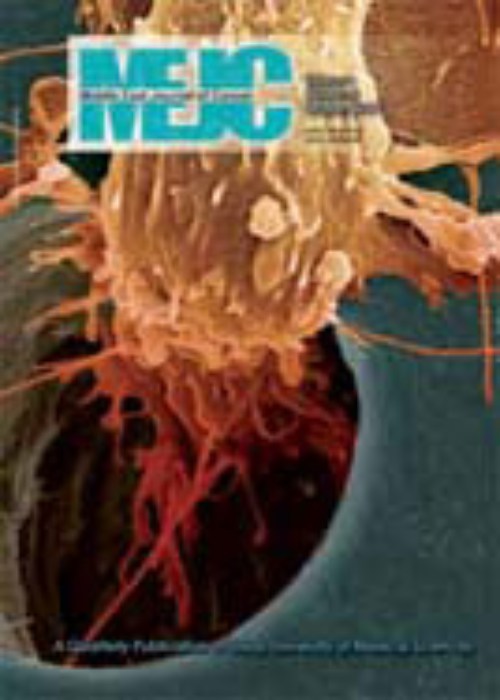Salivary Amylase as a Predictive Marker for Radiation-Induced Salivary Dysfunction in Head and Neck Cancer: A Pilot Study
Author(s):
Article Type:
Research/Original Article (دارای رتبه معتبر)
Abstract:
Background
Reports correlating changes in salivary flow rate and amylase with radiation dose to parotid glands and development of salivary dysfunction for Head and Neck cancers (HNC) are lacking. In the current study, an attempt was made at understanding this.Method
This was a prospective study carried out on people newly diagnosed with HNC requiring curative radiotherapy of more than 60 Gy. The salivary flow rate and levels of salivary α-amylase were evaluated before the start of radiation [day 1, before exposure to the first fraction of 2 Gy radiation], after 2 Gy [24 hours after the 1st fraction of 2 Gy, before exposure to 2nd fraction of 2 Gy on day 2 of the treatment], and on the completion of 30 Gy [(15 fraction of 2 Gy), before start of the 16th fraction, at the start of the fourth week on day 22] of radiation and development of salivary dysfunction was evaluated on a weekly basis. The demographic data were subjected to frequency and percentage, while biochemical data were stratified depending on dose to parotids and subjected to unpaired “t-test”. We also employed chi square/Fishers exact test to ascertain changes in the number of patients developing various degrees of salivary dysfunction on a weekly basis. A P value of <0.05 was considered significant.Results
Radiation decreased salivary flow rate from 0.29 ± 0.02 to 0.20 ± 0.04 (P = 0.0001) and amylase from 147.69 ± 11.15 to 109.07 ± 23.21 U/L (P = 0.0005). Both salivary flow rate and amylase was less in patients with severe salivary gland dysfunction (P = 0.014) and cumulative dose of radiation to the parotid glands (P = 0.014). The number of patients with a severe degree of salivary dysfunction was seen in people exposed to more than 25 Gy to the parotids (P = 0.04).Conclusion
The results suggested that the evaluation of salivary amylase on day 22 could be a useful predictive marker to understand the development of radiation-induced dysfunction in patients with curative radiotherapy for their head and neck cancer.Keywords:
Radiation , Saliva , Amylases , Salivary glands , Xerostomia
Language:
English
Published:
Middle East Journal of Cancer, Volume:14 Issue: 1, Jan 2023
Pages:
61 to 71
magiran.com/p2535539
دانلود و مطالعه متن این مقاله با یکی از روشهای زیر امکان پذیر است:
اشتراک شخصی
با عضویت و پرداخت آنلاین حق اشتراک یکساله به مبلغ 1,390,000ريال میتوانید 70 عنوان مطلب دانلود کنید!
اشتراک سازمانی
به کتابخانه دانشگاه یا محل کار خود پیشنهاد کنید تا اشتراک سازمانی این پایگاه را برای دسترسی نامحدود همه کاربران به متن مطالب تهیه نمایند!
توجه!
- حق عضویت دریافتی صرف حمایت از نشریات عضو و نگهداری، تکمیل و توسعه مگیران میشود.
- پرداخت حق اشتراک و دانلود مقالات اجازه بازنشر آن در سایر رسانههای چاپی و دیجیتال را به کاربر نمیدهد.
In order to view content subscription is required
Personal subscription
Subscribe magiran.com for 70 € euros via PayPal and download 70 articles during a year.
Organization subscription
Please contact us to subscribe your university or library for unlimited access!


